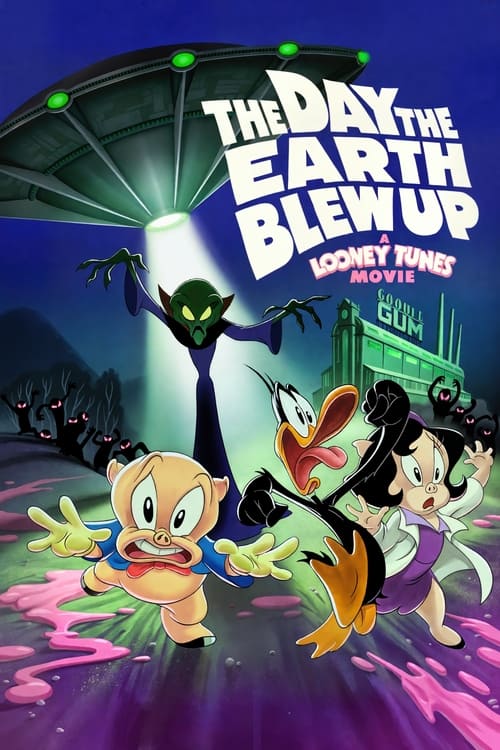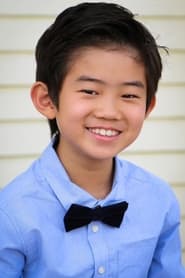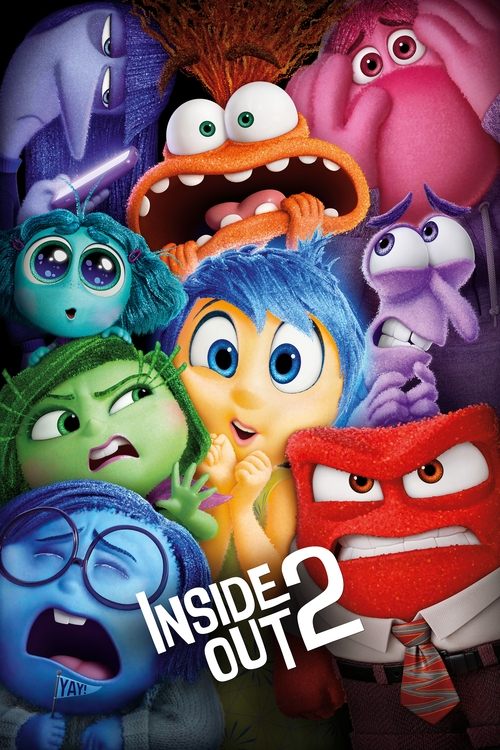
Ask Your Own Question
What is the plot?
In 2002, in the bustling city of Toronto, Canada, thirteen-year-old Meilin "Mei" Lee lives a life tightly woven between the expectations of her Chinese-Canadian family and her own burgeoning identity. Mei is an ambitious, overachieving middle schooler, devoted to making her mother, Ming Lee, proud. Ming is strict and overprotective, while Mei's father, Jin Lee, offers quiet balance in the household. The family maintains an ancestral temple dedicated to their maternal ancestor, Sun Yee, a figure of great spiritual significance whose legacy looms over Mei's life and future responsibilities.
Mei's world is a delicate balancing act. She helps care for the family temple, attends school, and shares a close bond with her three best friends--Miriam, Priya, and Abby. Together, the girls are obsessed with the boy band 4*Town, a passion Mei keeps hidden from Ming. She also harbors a secret crush on Devon, the 17-year-old clerk at the local convenience store, a detail that will soon set off a chain of events that changes her life forever.
One evening, Ming stumbles upon Mei's private journal, discovering her crush on Devon. Determined to protect her daughter, Ming confronts Devon publicly at the convenience store, embarrassing Mei in front of her classmates, including the school bully, Tyler. The humiliation is crushing for Mei, and that night she experiences a vivid nightmare filled with red pandas, a symbol that will soon take on terrifying reality.
The next morning, Mei wakes to find herself transformed into a giant red panda. Shocked and terrified, she hides from her parents and experiments to understand her new condition. She discovers that intense emotions--stress, excitement, fear--trigger her transformation. When she reverts to human form, her hair remains bright red, forcing her to wear a touque to school to hide the change. Ming initially mistakes Mei's transformation for the onset of menstruation, but the truth becomes undeniable after Mei, overwhelmed by embarrassment, transforms in front of the school security guard and flees home in tears.
Ming reveals the family secret: all the women in their lineage possess the ability to transform into red pandas when overcome by strong emotions. This power originated with their ancestor Sun Yee, who was gifted the red panda form to protect her family. Over generations, this gift has become a burden, especially in the modern world. The family's tradition includes a ritual to permanently seal away the panda transformation, a ceremony that must occur during a rare astronomical event--the Red Moon, a lunar eclipse--scheduled in about a month from Mei's first transformation.
Despite the ritual's looming deadline, Mei yearns for freedom and normalcy. Ming forbids her from attending the upcoming 4*Town concert, fearing it will disrupt the ritual and Mei's control over her transformations. Undeterred, Mei and her friends devise a plan to raise money for the concert tickets by capitalizing on Mei's panda form. They create a sort of black market attraction at school, where Mei's panda persona becomes a sensation. The friends' scheme culminates in Mei agreeing to appear as the panda at Tyler's birthday party to raise the final $100 needed for tickets.
At Tyler's party, tensions explode. Tyler insults Mei's family, provoking her into a furious attack in her panda form that frightens the other children. Ming arrives just in time to witness the chaos and is confronted by Tyler's parents. Ming blames Mei's friends for encouraging her to continue transforming and forbids Mei from seeing them. Mei, desperate to maintain her mother's approval, fails to defend her friends, leaving them hurt and disappointed.
As the night of the ritual approaches, Mei's grandmother and aunts arrive to assist with the ceremony. The family prepares to perform the sealing ritual that will confine Mei's panda form to a talisman forever. However, during the ritual, Mei hears the distant sounds of the 4*Town concert, where her friends are celebrating. In a moment of clarity and rebellion, Mei realizes she loves her panda form--it represents a part of herself she refuses to hide or suppress. She breaks free from the ritual and rushes to join her friends at the concert.
Ming, enraged by Mei's defiance, undergoes a terrifying transformation herself, becoming a massive, kaiju-sized red panda. She storms the concert venue, intent on forcing Mei to return and complete the sealing ritual. The stadium erupts into chaos as mother and daughter confront each other. Their argument is fierce and emotional, highlighting the generational and cultural clash between Ming's desire for control and Mei's need for self-expression.
In the heat of their confrontation, Mei accidentally knocks Ming unconscious. The rest of the Lee family arrives, and together they subdue Ming. Mei's friends and the members of 4*Town join in, singing to support the ritual. The family performs the sealing ceremony, but with a crucial modification: instead of sealing Mei's panda form, the ritual transports all the transformed women to another plane of existence where they reconcile with one another.
In this new realm, the grandmother and aunts choose to seal their panda forms permanently into talismans, accepting the family tradition. Mei, however, makes a bold and definitive choice to keep her red panda form, embracing it as a vital part of her identity. This decision breaks the cycle of repression and sets a new precedent for her family.
The film closes with Mei confidently navigating her dual life--continuing to help at the temple while freely enjoying her friendships and individuality. Ming, having witnessed her daughter's courage, begins to soften, opening up to change and accepting Mei's transformation not as a curse, but as a gift. The story ends on a hopeful note of self-acceptance, mutual understanding, and the evolving bond between mother and daughter.
Throughout the film, there are no deaths; the story focuses on emotional growth, family dynamics, and cultural identity rather than physical violence or fatal consequences. The major revelations include the ancestral origin of the red panda transformation, the impending sealing ritual during the Red Moon, and Mei's ultimate choice to embrace her true self rather than conform to tradition. The confrontations--between Mei and Ming, Mei and Tyler, and Mei with her friends--serve to build tension and highlight the central themes of the narrative.
Thus, "Turning Red" unfolds as a vivid, emotionally rich coming-of-age story set against the backdrop of early 2000s Toronto, blending magical realism with universal themes of adolescence, family, and self-discovery.
What is the ending?
In the ending of "Turning Red," Mei confronts her inner turmoil and ultimately embraces her true self, including her ability to transform into a giant red panda. After a climactic showdown at a concert, she chooses to control her transformation rather than suppress it. Mei's relationship with her mother, Ming, evolves as they come to understand each other better. The film concludes with Mei finding balance in her life, accepting her panda form, and strengthening her friendships.
Now, let's delve into the ending in a more detailed narrative fashion.
As the climax of the film approaches, Mei Lee finds herself at the center of a significant conflict. The night of the big 4*Town concert arrives, and Mei is determined to attend with her friends, Abby, Priya, and Miriam. However, her mother, Ming, has other plans. Ming insists that Mei should perform a ritual to contain her panda transformation, fearing the chaos it could bring. This moment is filled with tension as Mei grapples with her desire for independence and her mother's expectations.
In a pivotal scene, Mei, overwhelmed by the pressure, transforms into her giant red panda form during a confrontation with her mother. The transformation is both a physical manifestation of her emotions and a symbol of her struggle for autonomy. The vibrant red panda, representing her inner self, wreaks havoc in their home, showcasing the chaos that ensues when she cannot control her emotions.
As the situation escalates, Mei realizes that she cannot continue to hide her true self. She decides to embrace her panda form, understanding that it is a part of who she is. This acceptance is a turning point for her character. With her friends' support, she makes her way to the concert, where she hopes to find a way to balance her panda identity with her everyday life.
At the concert, the atmosphere is electric, filled with excitement and anticipation. Mei's friends rally around her, encouraging her to let go of her fears. As she takes the stage, she transforms into the red panda once more, but this time, she is in control. The crowd is captivated, and Mei performs with confidence, showcasing her unique abilities rather than hiding them. This moment is a celebration of self-acceptance and the power of friendship.
Meanwhile, Ming, who has been watching from the sidelines, begins to understand her daughter's journey. She sees Mei's strength and the joy she brings to her friends and the audience. In a heartfelt moment, Ming approaches Mei, and they share a connection that transcends their previous conflicts. They both acknowledge their fears and desires, leading to a reconciliation that strengthens their bond.
As the concert concludes, Mei's transformation back into her human form symbolizes her newfound balance. She has learned to embrace her panda side while also cherishing her relationships with her friends and family. The film ends on a hopeful note, with Mei and her friends celebrating their victory together, and Ming accepting Mei for who she truly is.
In the aftermath, Mei's relationship with her mother is transformed. They have a deeper understanding of each other, and Ming no longer sees the panda as a curse but as a part of Mei's identity. Mei's friends remain by her side, and they continue to support each other as they navigate the challenges of adolescence together. The final scenes depict a harmonious blend of Mei's panda life and her everyday experiences, illustrating her journey toward self-acceptance and the importance of community and family.
Is there a post-credit scene?
Yes, "Turning Red" features a post-credit scene.
In this scene, we see Mei Lee, now more comfortable with her transformation and the responsibilities that come with it, enjoying a moment with her friends. They are gathered together, and Mei is excitedly sharing her experiences and newfound confidence after embracing her panda form. The atmosphere is light-hearted and filled with laughter, showcasing the strong bond between the friends.
As the scene progresses, the camera shifts to a playful moment where they discuss their future plans and dreams, hinting at their aspirations and the adventures that lie ahead. The scene captures the essence of friendship and growth, reinforcing the film's themes of self-acceptance and the importance of community.
The post-credit moment serves as a joyful reminder of the journey Mei has undergone, celebrating her acceptance of herself and the support of her friends, leaving the audience with a sense of hope and positivity.
What causes Mei to transform into a giant red panda?
Mei Lee, a 13-year-old girl, transforms into a giant red panda whenever she experiences strong emotions. This transformation is a hereditary trait linked to her family's history, specifically a magical connection to the red panda spirit that her ancestors made a pact with.
How does Mei's relationship with her mother influence her transformation?
Mei's relationship with her mother, Ming, is central to her emotional struggles. Ming is overprotective and has high expectations for Mei, which creates tension. As Mei navigates her transformation, she grapples with her desire for independence and her mother's expectations, leading to conflict and ultimately a deeper understanding of their bond.
What role do Mei's friends play in her journey with the red panda?
Mei's friends, Abby, Priya, and Miriam, play a crucial role in her journey. They support her as she learns to embrace her transformation and help her navigate the challenges of adolescence. Their friendship provides a safe space for Mei to express her emotions and ultimately accept her true self.
What is the significance of the red panda in Mei's cultural background?
The red panda symbolizes Mei's connection to her Chinese heritage and the generational trauma that comes with it. The transformation represents the struggle between cultural expectations and personal identity, highlighting the importance of embracing one's true self while honoring family traditions.
How does Mei's transformation affect her school life and social interactions?
Mei's transformation into a giant red panda complicates her school life, as she struggles to balance her normal teenage experiences with the chaos of her new abilities. Her emotional outbursts lead to humorous yet challenging situations, affecting her friendships and her ability to fit in, ultimately pushing her to confront her identity.
Is this family friendly?
"Turning Red" is generally considered family-friendly, but it does contain some themes and scenes that may be sensitive for younger viewers or those who are particularly sensitive. Here are a few aspects to consider:
-
Puberty and Growing Up: The film explores themes of adolescence, including the physical and emotional changes that come with puberty. This may be uncomfortable for some children or parents discussing these topics.
-
Emotional Turmoil: The protagonist, Mei, experiences intense emotions, including frustration, embarrassment, and anxiety, which may resonate with some viewers but could be distressing for others.
-
Parental Conflict: There are moments of tension between Mei and her mother, which may reflect real-life family dynamics. This could be relatable but also upsetting for children who may have similar experiences.
-
Transformation Scenes: Mei's transformation into a giant red panda can be visually striking and may be interpreted as frightening or overwhelming for some younger viewers.
-
Social Pressure: The film addresses themes of peer pressure and the desire to fit in, which can be emotionally charged and may evoke feelings of anxiety or discomfort.
Overall, while "Turning Red" is designed to be relatable and humorous, these elements may require parental guidance for younger audiences.
















































































